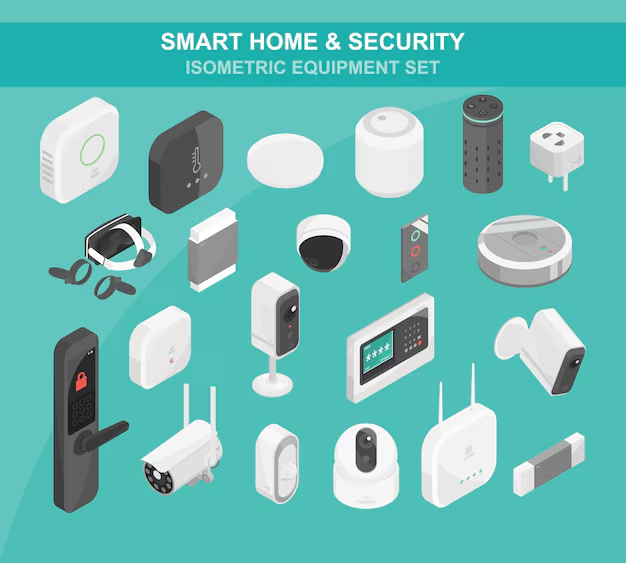Zigbee vs WiFi: Choosing the Right Smart Home Protocol
Zigbee devices can build a mesh network and have low bandwidth consumption, which makes them suitable for small smart home devices like battery-operated sensors or object tags. WiFi networks, on the other hand, are ideal for consumer IoT applications that require high-speed connectivity and seamless device integration.
All smart home devices need a hub or bridge to communicate with each other and your mobile phone app. To get started, you will need a smart home controller that supports either protocol.
Cost
Zigbee devices are a great choice for smart home systems that require low power consumption. They are based on the 2.4 GHz frequency band, which is an unlicensed spectrum available worldwide. Additionally, they use a mesh network topology that allows each device to act as a repeater and communicate with other devices. This ensures that your smart home is always connected, even if some devices are out of range. Additionally, Zigbee devices are designed to consume less energy than WiFi devices and can operate on battery power for extended periods of time.
Another benefit of Zigbee devices is their lower cost than WiFi devices. This is a result of the technology’s long-term availability and economies of scale, as well as a wide range of compatible smart home products. Zigbee devices also offer two-way communication, allowing you to receive and send information.
Both technologies have advantages and disadvantages, but it’s important to consider the specific requirements of your smart home system before choosing the right protocol. It’s important to evaluate factors such as power consumption, data transfer rates, range, and compatibility. It’s also worth keeping an eye on future developments, like the Connectivity Standards Alliance’s plan to merge Zigbee with another network called Matter, which may change how these protocols work in the future. In the meantime, Wi-Fi is a more established technology with many benefits, including compatibility with a variety of smart home devices.
Range
While Wi-Fi is a well-known wireless protocol, it’s not the only one that connects the modern systems we use in our homes. Zigbee and Z-Wave are also common networking standards that offer a variety of smart home features. The benefits of choosing the right network depend on your needs and budget.
Zigbee is a low-power mesh network technology that was developed and standardized by the Zigbee Alliance in 2003. It operates at a lower frequency than WiFi, operating at 2.4 GHz. Although it does not operate in the same bands as WiFi, it uses the same technology and can overcome many of the same problems, such as hub-to-product range issues, by using line-powered devices that function as repeaters.
The low power consumption of Zigbee allows it to transmit data over long distances using the mesh network. This allows smart home devices to communicate with each other directly without the need for a central control hub, reducing costs and energy usage. Zigbee networks are also easier to set up and maintain, with less need for passwords and configurations.
WiFi, on the other hand, offers higher bandwidth and faster data transfer rates. This makes it better suited for consumer IoT applications that require continuous user interaction and compatibility with a wide range of devices. However, Wi-Fi has its drawbacks, including a lack of security measures and the need for multiple login credentials to access the network.
Power
When selecting smart home devices, it is important to consider the different power options available. While both Zigbee and WiFi operate on the same frequency, they differ in terms of network type, data transfer rates, and range.
Zigbee is a low-power communication protocol that works well for battery-powered devices like sensors and switches. Its low-bandwidth design is also ideal for devices that need small, intermittent bursts of data. Additionally, Zigbee networks are self-organizing and have much lower energy consumption than WiFi devices.
However, WiFi is a more versatile technology that offers faster data transmission and broader coverage. It is also more popular and is used by a wider range of smart home products. Additionally, WiFi is easy to set up and requires no hub.
Another important consideration when choosing a smart home protocol is interoperability. Both Zigbee and WiFi are widely used, but they do not work well with all smart home devices. Matter is a new smart home protocol that promises to provide more interoperability than Zigbee. It uses a combination of networking layers, including WiFi, Bluetooth Low Energy, and Thread. Moreover, it utilizes an IP-based communication layer for the commissioning process. However, Matter is still not a fully ratified standard. As such, it may be a while before we see more products on the market that support it.
Security
Zigbee devices offer built-in security measures, including encryption and authentication protocols. These features make it difficult for attackers to intercept and manipulate data. However, the protocol is not designed to support a large ecosystem of compatible devices like Bluetooth and WiFi. This can make it vulnerable to attacks that target specific products or platforms.
Unlike Zigbee, WiFi offers high bandwidth and fast data transfer rates, which makes it ideal for consumer-focused IoT applications. This includes real-time streaming, video calls, and remote access to smart home devices. In addition, WiFi is able to cover greater distances and work around obstacles than other wireless technologies.
As a result, it’s well-suited for smart home devices that require a stable power source, such as smart lights, thermostats, and doorbells. The downside is that Wi-Fi can consume more power than other wireless technologies.
Depending on your preferences, you might prefer Matter or Zigbee. Both are highly scalable and can work on small or large networks. They also differ in terms of usability. While Zigbee devices are easy to install and use, they have a lower data rate and shorter range than Wi-Fi. Matter, on the other hand, has a more versatile network system and doesn’t require various hubs to function. It is also more cost-efficient than Zigbee.







